
The Guys of LIDAR got together to do some miscellaneous testing of several radar detectors, many which were brand new right out of the box.

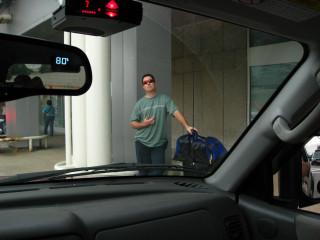
The Radar Units
The following radar units were used in this test:
- Kustom Golden Eagle, Ka-Band 35.5 GHz
- Kustom Eagle, Ka-Band 35.5 GHz
- Stalker ATR, Ka-Band 34.7 GHz
- MPH Enforcer, Ka Band 33.8 GHz
- Kustom Falcon, K-Band
- Decatur GHS, K-Band
All radar units were checked for proper operation prior to the test.
|
The Radar Detectors
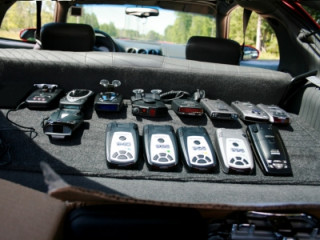
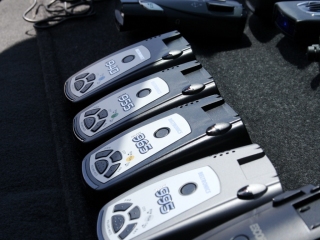
The following radar detectors were tested:
- Beltronics RX-65 - Brand New Retail, provided by RacerX
- Beltronics STi Driver (#1) - Brand New Retail, provided by RacerX
- Beltronics STi Driver (#2) - Personal detector w/33.8 fix, provided by Jerry540i
- Beltronics V940 - Brand New Retail, provided by RacerX
- Beltronics V955 - Brand New Retail, provided by RacerX
- Beltronics V965 - Brand New Retail, provided by RacerX
- Beltronics V995 - Brand New Retail, provided by RacerX
- Cobra XRS 9985 - Brand New Retail, provided by RacerX
- Escort 8500 X50 - Brand New Retail, provided by RacerX
- Escort 9500i - Brand New Retail, provided by RacerX
- Escort Solo S2 - Brand New Retail, provided by RacerX
- RMR C430 - Personal detector, provided by Jimbonzzz
- Valentine One (#1) - Brand New Retail, provided by RacerX (3.863)
- Valentine One (#2) - Personal detector, provided by Jerry540i (3.863)
- Valentine One (#3) - Personal detector, Provided by TheStaton (3.813)
- Whistler 1788 - Personal detector, provided by Jimbonzzz
- Whistler Pro 78 - Brand New Retail, provided by RacerX
|
Multiple samples of some of the high-end detectors were tested, to account for any potential variance. For the Forward Facing and Instant-On tests, a couple of additional personal detectors were thrown in for comparison purposes.
Test Methodology
All else being equal, how to the radar detectors stack up against each other in terms of performance? This is what we set out to determine. We tested the detectors by exposing each one to a specific set of controlled conditions.
- All radar guns were held in a fixture for test purposes.
- Only one detector was tested/powered on at a time.
- All detectors were mounted level, and high in the middle of the windshield.
- Between runs, the power was cycled on the detector under test.
- Each detector was tested with factory default settings, in it's most unfiltered mode, with SWS OFF and POP OFF, unless otherwise mentioned.
- All test runs were done when the course was clear of other vehicles
For the Straight-Line sensitivity test, we used radar absorbent foam (this was not used for the other tests).
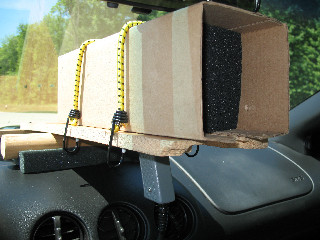
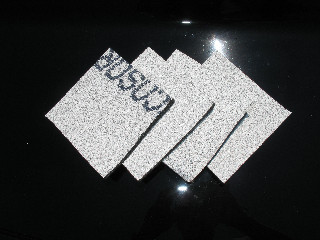
Eccosorb is specially-designed foam which absorbs radar. In this test, the Guys of LIDAR used layers of Eccosorb in front of the radar antennas to reduce the radar signal, or make it weaker.
Why? Because a detector's job is to sniff out weak signals.
The further away you are from the radar, the weaker the signal becomes. Today's high-end radar detectors can detect radar miles and miles away in the right situations. Because of this, radar detector tests commonly use hills, terrain, or other means to reduce the radar signal for test purposes. But every test situation is different, and these methods can sometimes yield sporadic results.
Enter Eccosorb. The Eccosorb allowed us to reduce the radar signal in a highly-controlled manner, and allowed us to test on a straight course under highly controlled conditions. This method of testing also reduced or eliminated some of the unpredictability that occurs with other methods, and yielded highly-repeatable results.
In addition to the Eccosorb in front of the radar, the sides and rear were also surrounded with Eccosorb just for good measure to help prevent any stray radar reflections.
Please remember: what these test results provide is an indication of "relative sensitivity", or how the detectors might compare against themselves or each other. Just like any other radar detector test (foam or not), the absolute distances in the results cannot be applied to any situation other than the specific test conditions.
In this test, just like any other, it's the ratios that matter.
Straight-Line Sensitivity Test
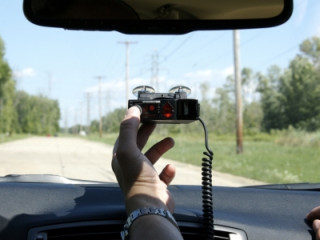
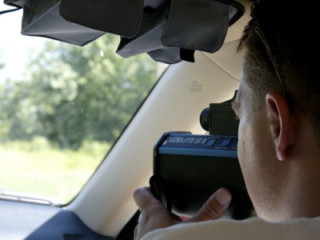

If you follow our tests, then this test course needs no introduction. It's a 2000+ foot straight-stretch at the end of a deserted dead-end road. For this test, we tested each detector thoroughly on all the of the main Ka frequencies, and also experimented a bit to see how different detector settings might affect performance. The test vehicle proceeded down the test course and stopped at the first alert from the detector under test. The distance back to the radar vehicle was measured by using an LTI Ultralyte in survey mode.
All results are in feet.
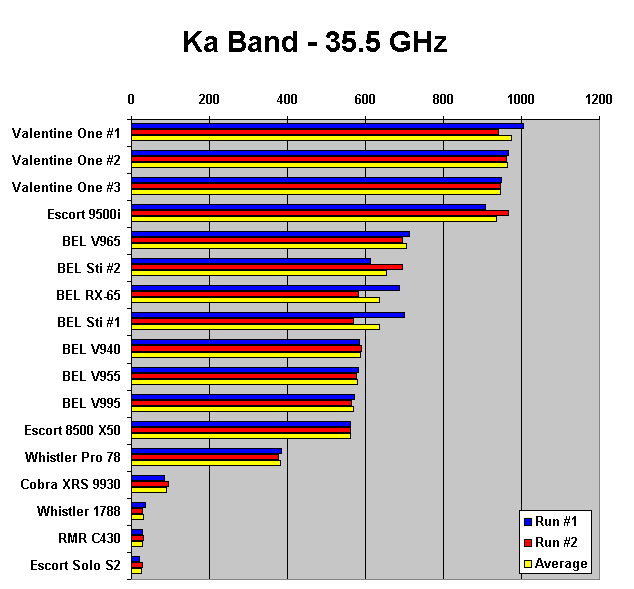
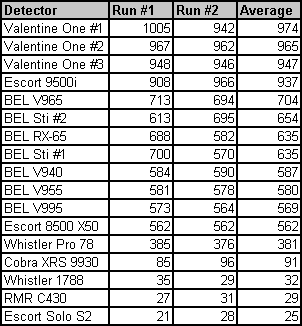
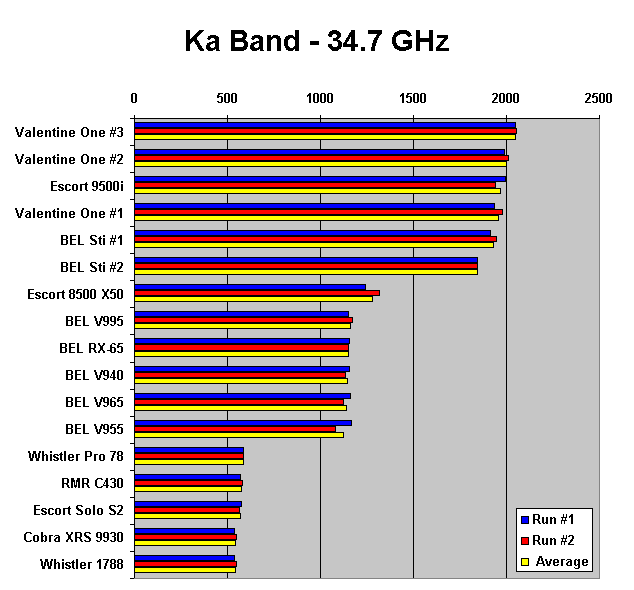
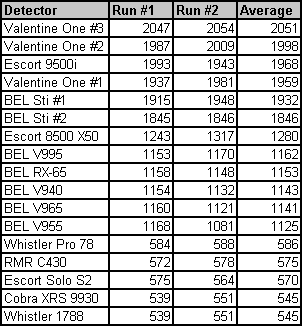
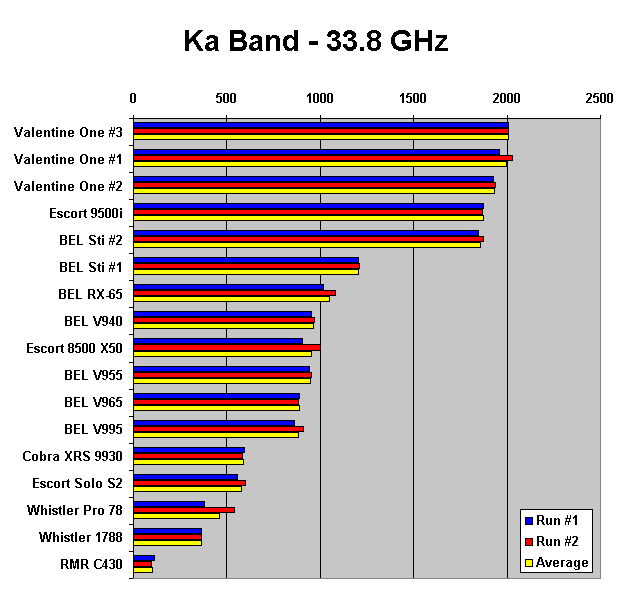
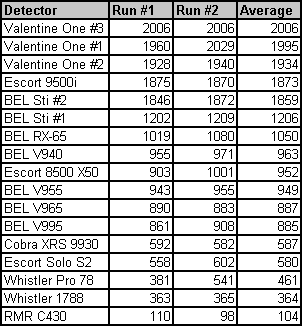
Experimenting With Settings
We did some experimenting with how the different settings on the detectors might change the way the detectors perform. There are always a lot of questions regarding this. For these tests, we used the Kustom Golden Eagle @ 35.5 GHz Ka band.

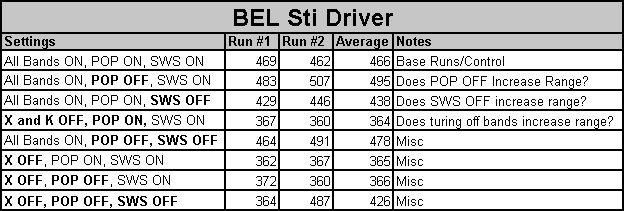



One other thing to note: we found that the SmartCord worked on all of the BEL Vector series detectors.
Around-The-Curve Test

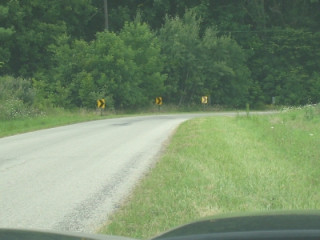
This test was performed on a 90-degree curve, with the radar aimed into the curve from one direction, and the test vehicle travelling into the curve from the other direction. Results are expressed as the distance from the test vehicle to the apex of the curve. K-Band and 34.7 GHz Ka band were tested.
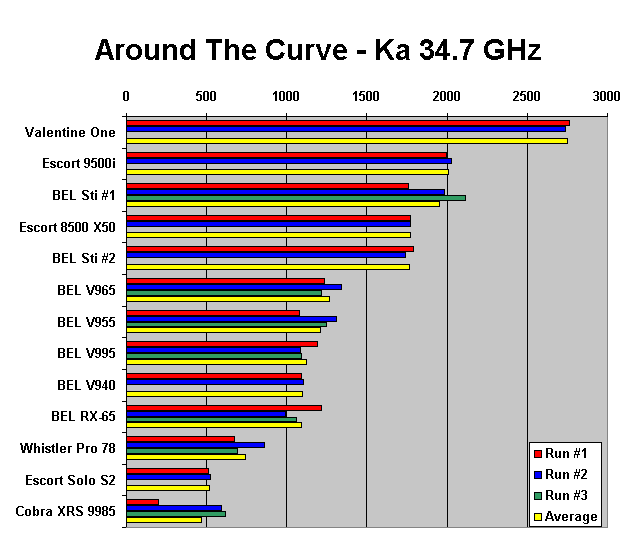
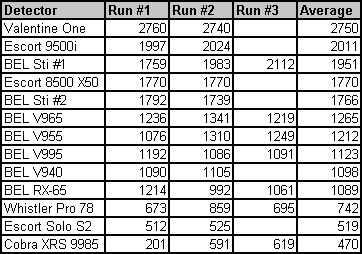
Note: for the 34.7 GHz curve test, some detectors got a third test run if the first two runs were significantly different. This is reflected in the results.
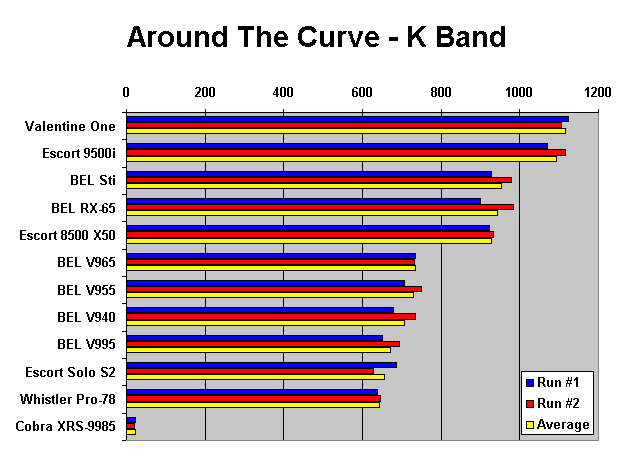
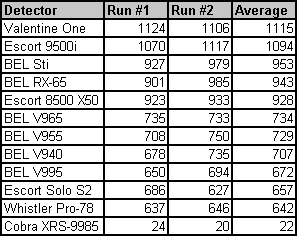
Forward Facing Test

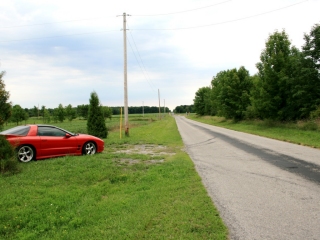
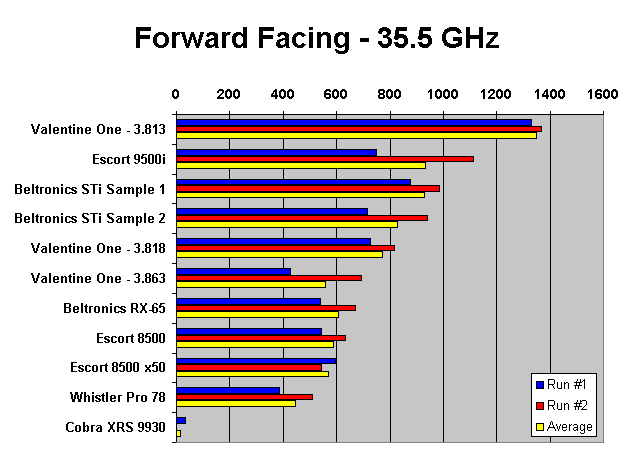
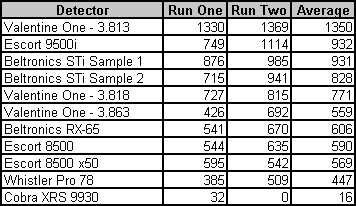
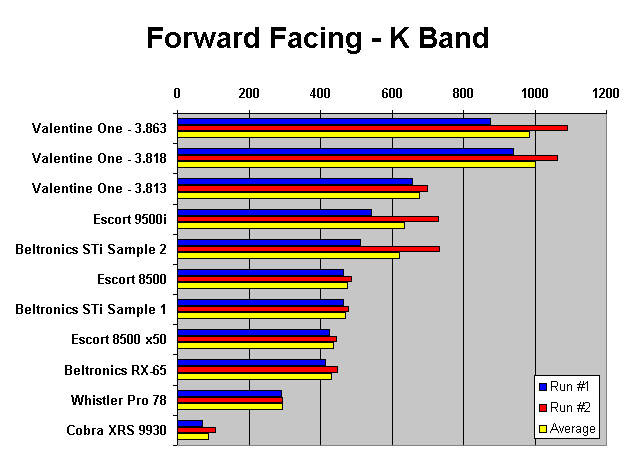
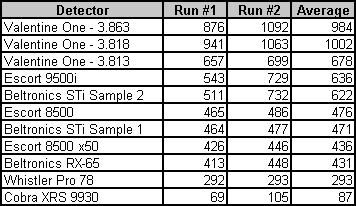
Instant-On Test
For this test, the radar unit we used was a Kustom Eagle @ 35.5 GHz Ka-Band. The target vehicle with the detectors was positioned at a stationary point approximately 1 mile away from the radar vehicle, with some terrain in between. Each detector was hit three times with instant-on bursts lasting approximately 2 second each. The results indicate whether each detector alerted or not.
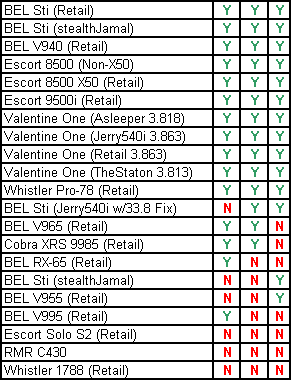
Prime Rib Test


Results:
EXCELLENT!
|



